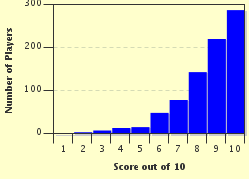Quiz Answer Key and Fun Facts
1. This mighty man contributed most to the American Declaration of Independence and was the third President of that country. Who was he?
2. This Thomas was a Catholic Dominican priest and a very influential philosopher and theologian of the thirteenth century. He is sometimes referred to as the "Angelic Doctor" (of the Catholic Church). Who was he?
3. This wizard lit up our world with the first commercially viable electric light bulb. Who was he?
4. This English lawyer, statesman, and Lord Chancellor lost his head when he opposed Henry VIII's wishes. Who was he?
5. This English novelist and poet gave us such works as "Tess of the d'Urbervilles" and "Far from the Madding Crowd". Who was he?
6. This Thomas was an English philosopher. He was born in 1588 and died in 1679. His most noted work was "Leviathan". Who was he?
7. This Thomas lived from 1875 to 1955. He was a German writer. His novels are noted for their symbolism and for their incorporated themes from Nietzsche, Goethe and Schopenhauer. He fled to Switzerland in 1933 and then to the United States when the Second World War broke out. Who was he?
8. In 1170, he lost his life in the Canterbury Cathedral. Who was he?
9. Described as a "corsetmaker by trade, a journalist by profession, and a propagandist by inclination" he was also known as one of the founding fathers of the United States of America. Who was he?
10. Part of a very well known comedy team where we were the stars of several hundred animated shorts between 1940 and 2008, we were constantly at war with each other - to the delight of children everywhere. Who were we?
Source: Author
Creedy
This quiz was reviewed by FunTrivia editor
bloomsby before going online.
Any errors found in FunTrivia content are routinely corrected through our feedback system.


